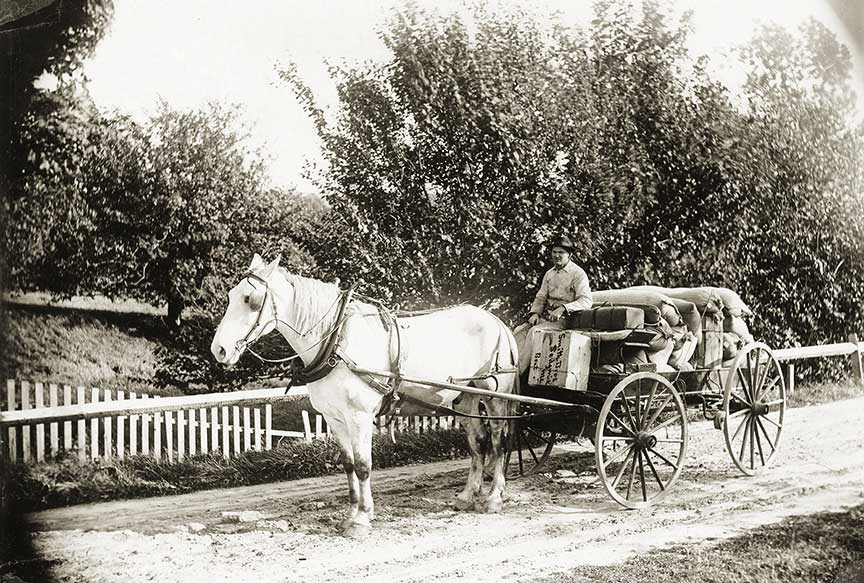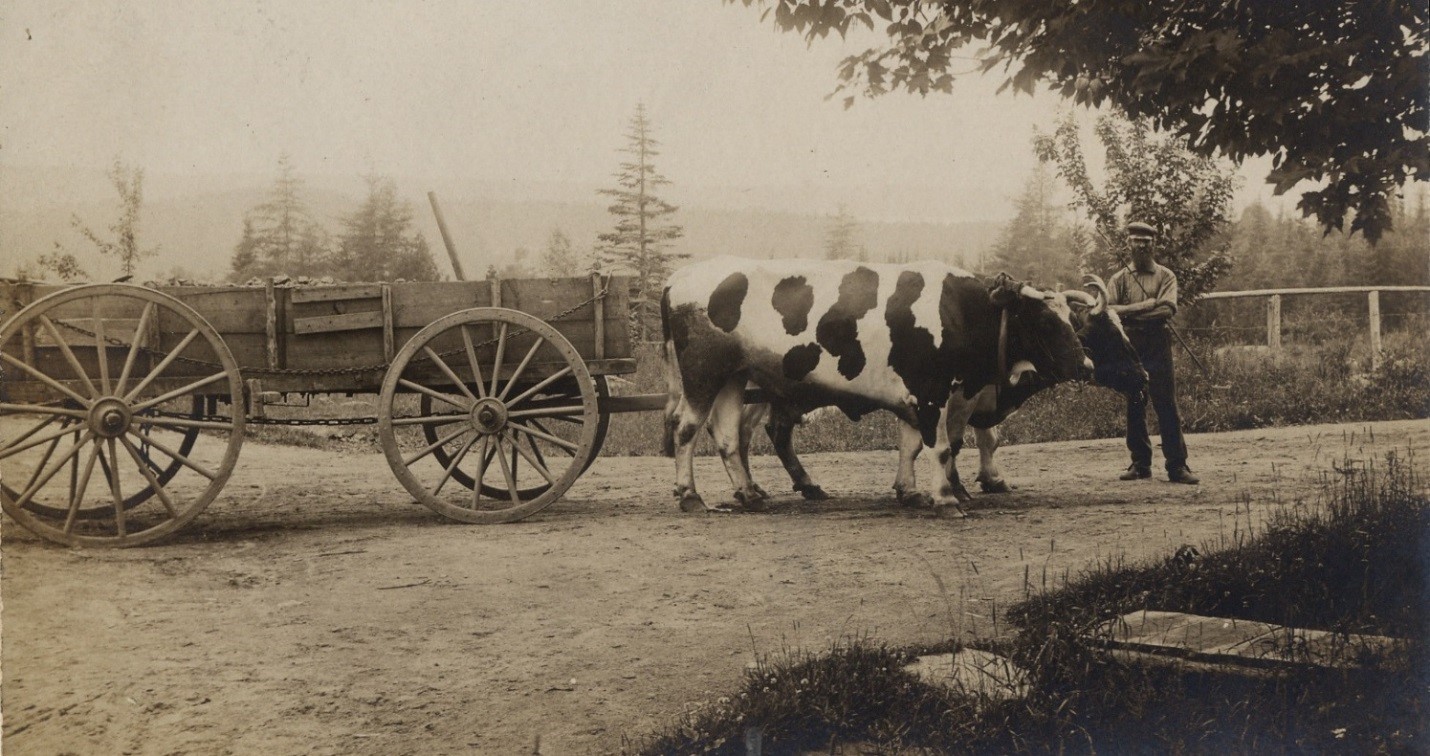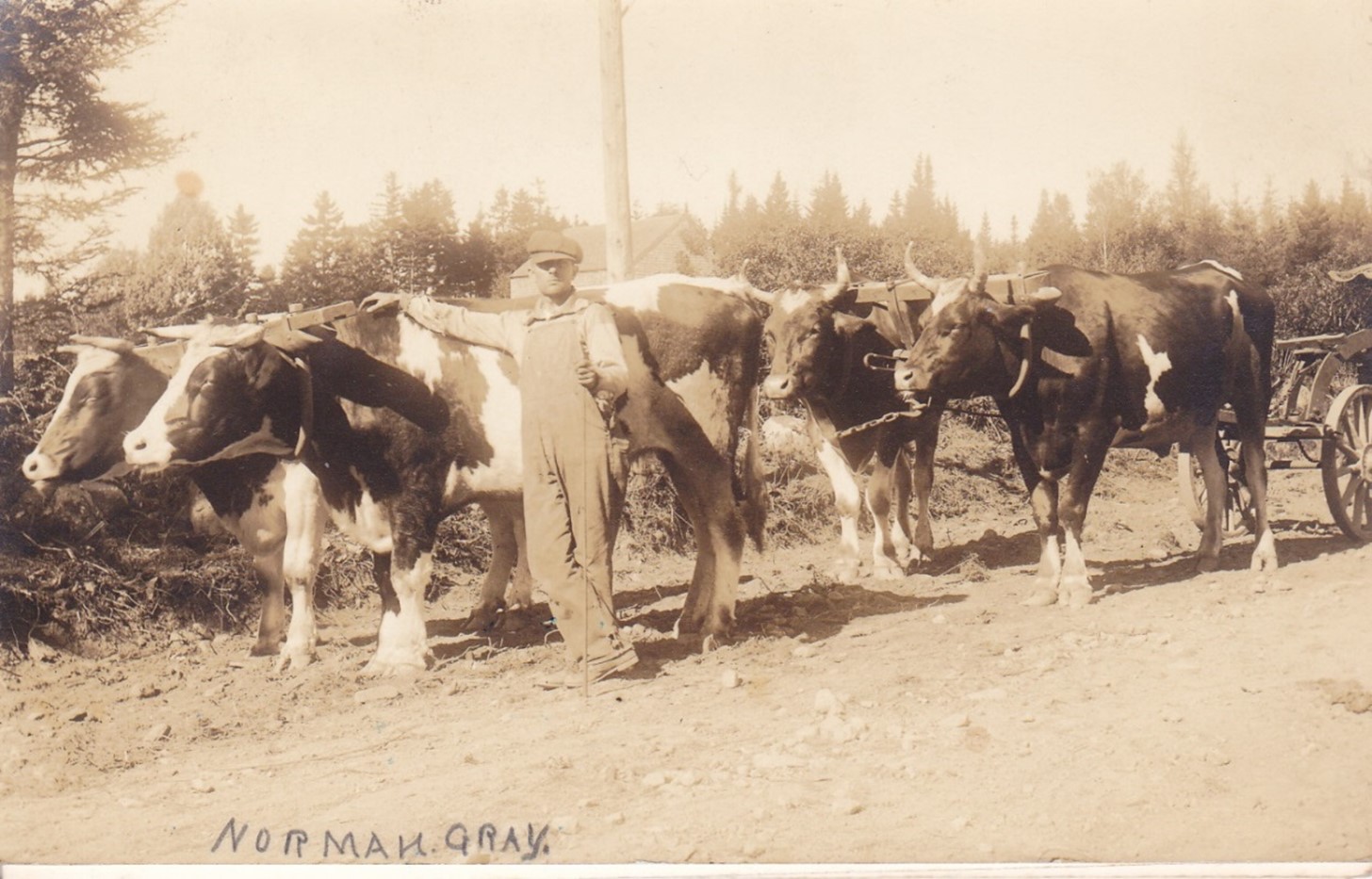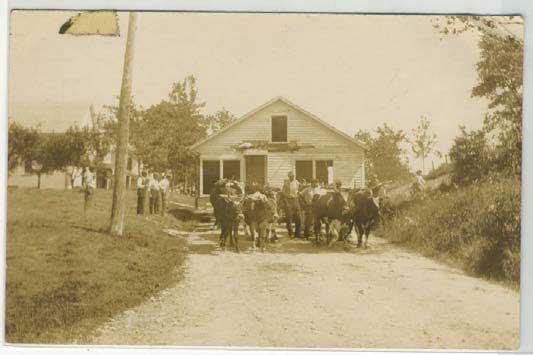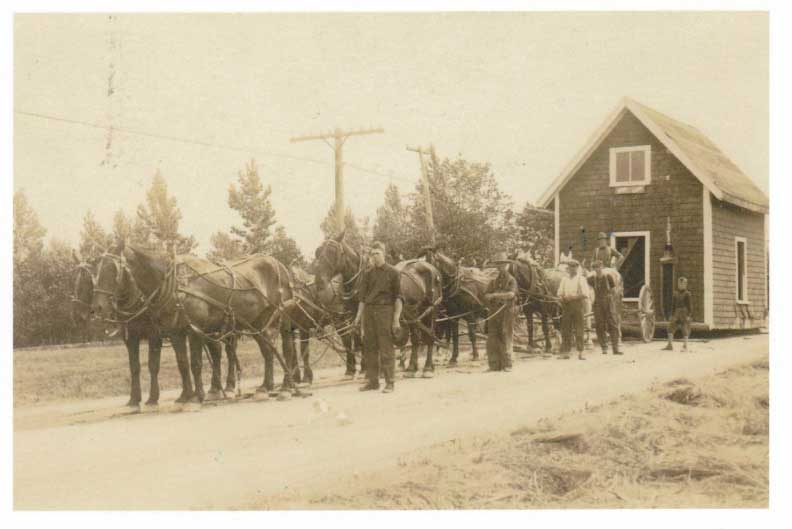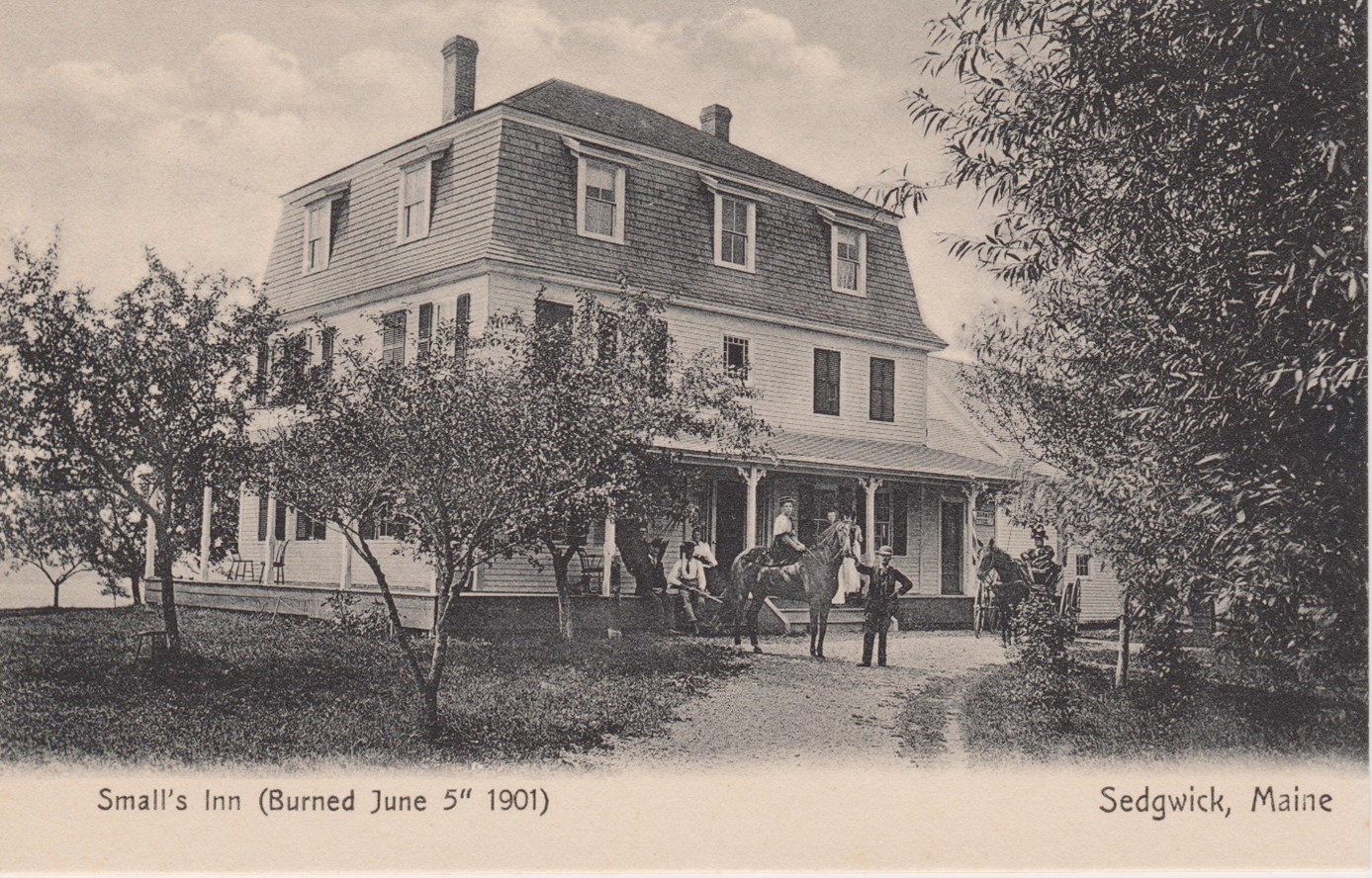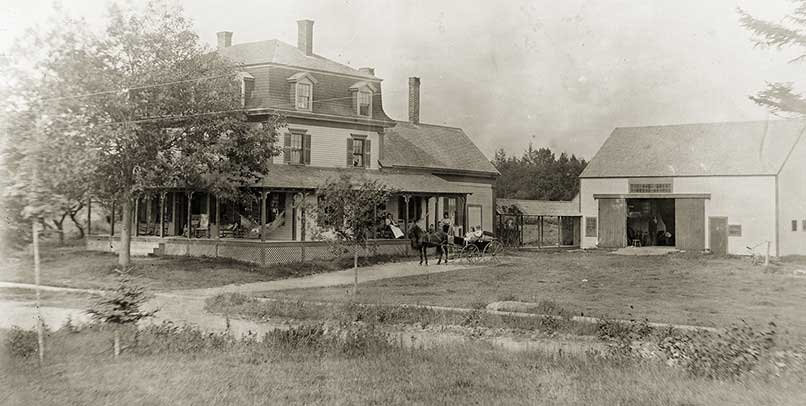Small Businesses (BUS.18)
Photo and text about the small businesses in Sedgwick
Small Businesses and Early Town Photos
The Sargentville Library has been given or loaned postcards or other photos that reflect a few of the many homes, buildings and small businesses that existed in years past in Sedgwick. This document includes those photos and uses business descriptions and details taken, in large part, from A Record of Business 1762-1976 Compiled by the Sedgwick Bicentennial Committee 1976.
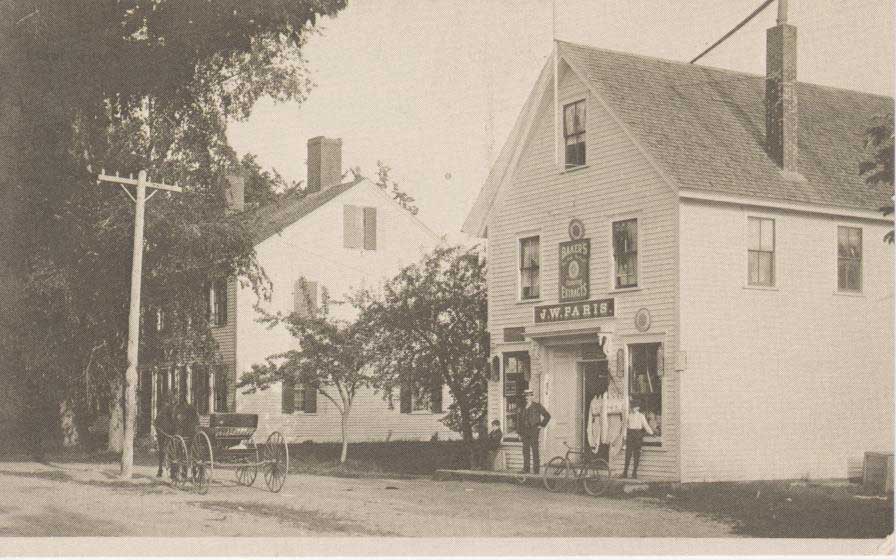
John Paris ran this as a General Store from 1914-1927. The Bicentennial Record states that he had his first store in 1894 at another site in Sedgwick Village.
From 1928-1945 the store was owned and operated by Mary Paris and Allyn Weising. Sylvia Wardwell recalls that Allyn Weising also ran a mortuary service here- in a separate part of the building. Ralph Warman rented the store and ran it for one year, 1945-1946. Foster Young sold electrical appliances there from 1946-1948. Charlie Young had a General Store, 1948-1962 and David McCarthy had a general store, 1962-1984.
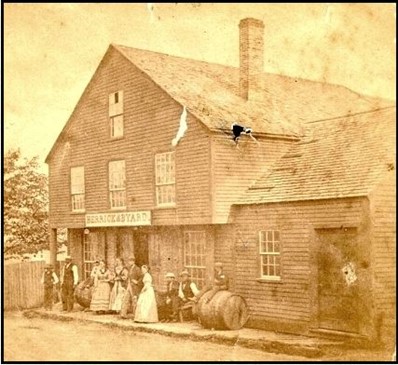
Capt. Samuel Herrick, who lived across the street, retired from the sea after the Civil War and opened a store in partnership with James Byard under the firm name of Herrick and Byard.
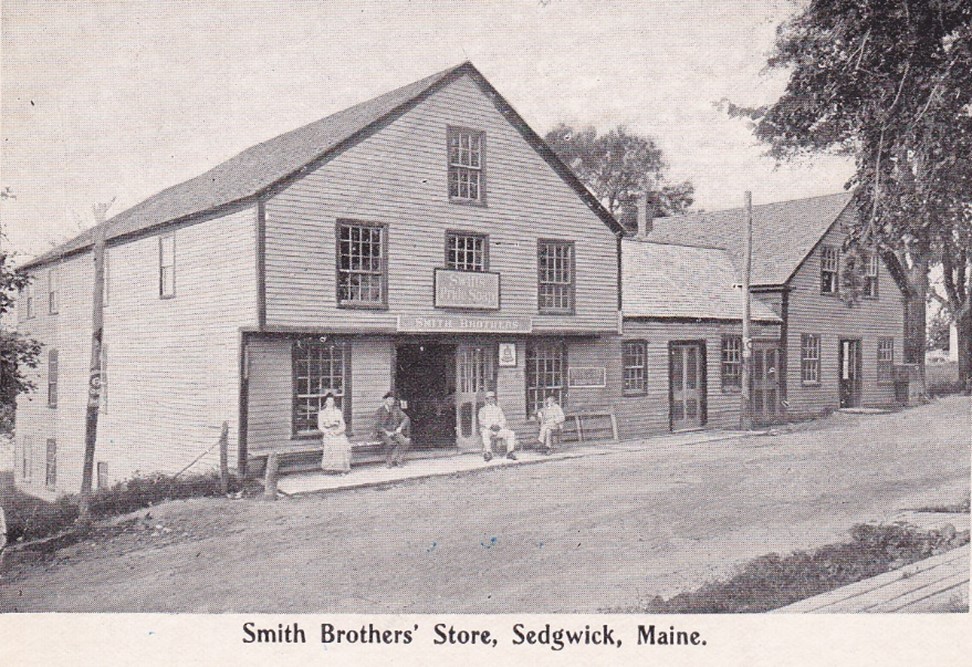
Capt. Samuel Herrick, who lived across the street, retired from the sea after the Civil War and opened a store in partnership with James Byard under the firm name of Herrick and Byard. In 1884 he took a new partner, F.A. Smith and the store operated under the name of Herrick, Smith and Co. until Herrick’s death when T.A. Smith joined his brother. It was carried on under the Smith Bros. name until 1831, when F.A. Smith died. For a few years E.G. Hayward operated the store then sold the property to Mrs. Evelyn de Latour Price.1 When Mrs. Price died the property was sold and is now a private residence.
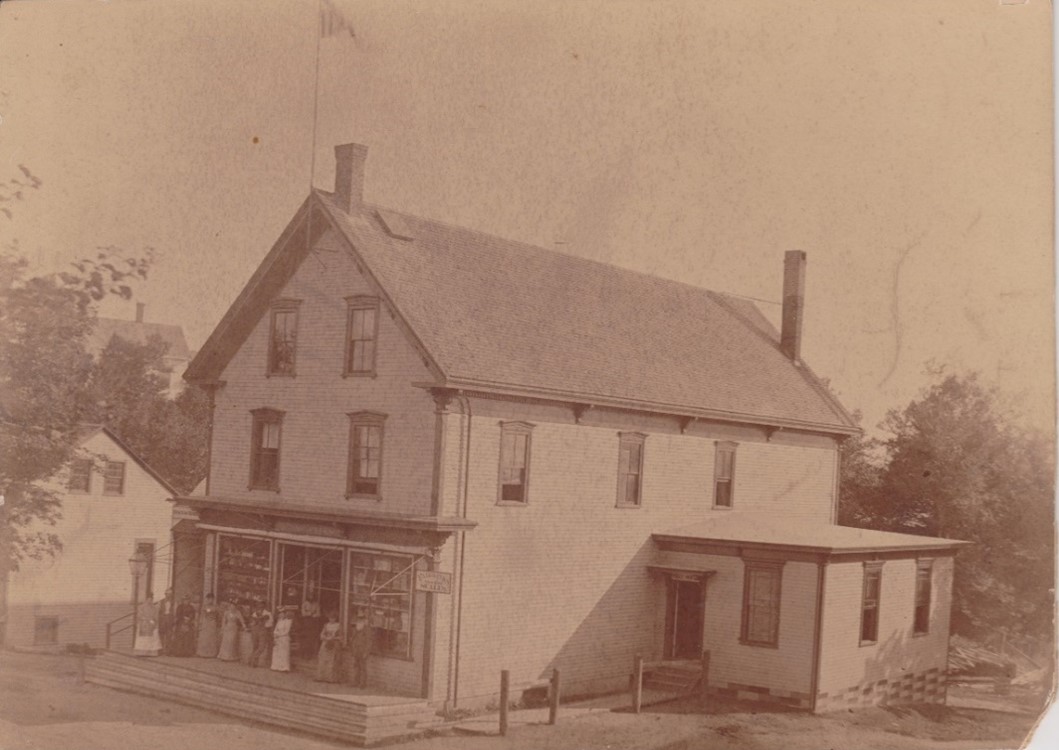
Wyer G. Sargent had a store in his home as early as the 1830s, then in a building, called the Iron Store, on his lawn and, finally, in this building which was completed in 1874. In this circa 1880 photo Wyer, with the white beard, can be seen on the right in front of the Wyer G. Sargent store. The post office is in the small building on the right.

Across the road from the Sargent store, and built over the brook, was a bakery (the square shaped building) and bowling alley. The bowling alley was built by Captain Will Gower about 1901-02 and when it was no longer used as a bowling alley, George Harding had his barber shop there. The brook is still there but both buildings are gone.
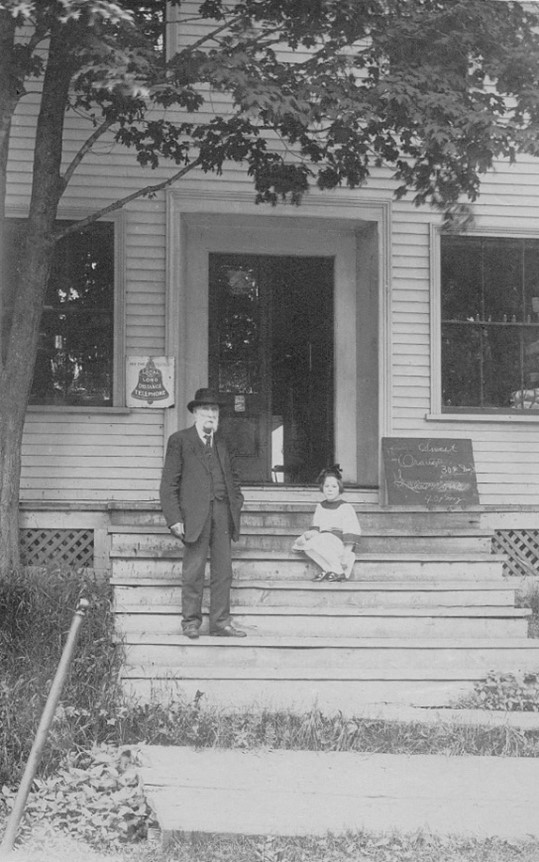
Captain Jasper N. Sargent opened this general store in front of his house around 1884 after he retired from the sea. The building was torn down circa 1944-45.
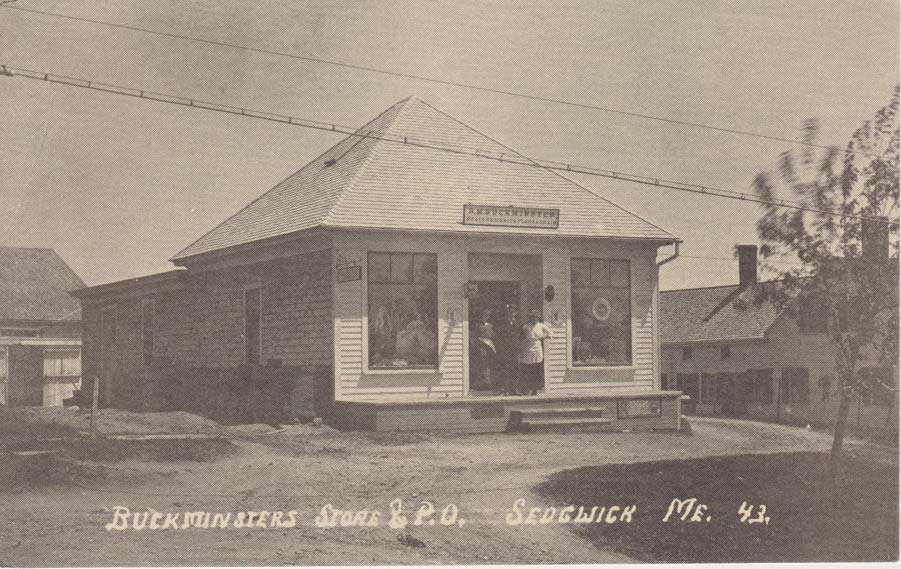
In 1920 Irving and Phebe Candage sold land where the Traveler’s Home had stood to Ralph M. Buckminster who built a small store. He sold general merchandise until 1945.
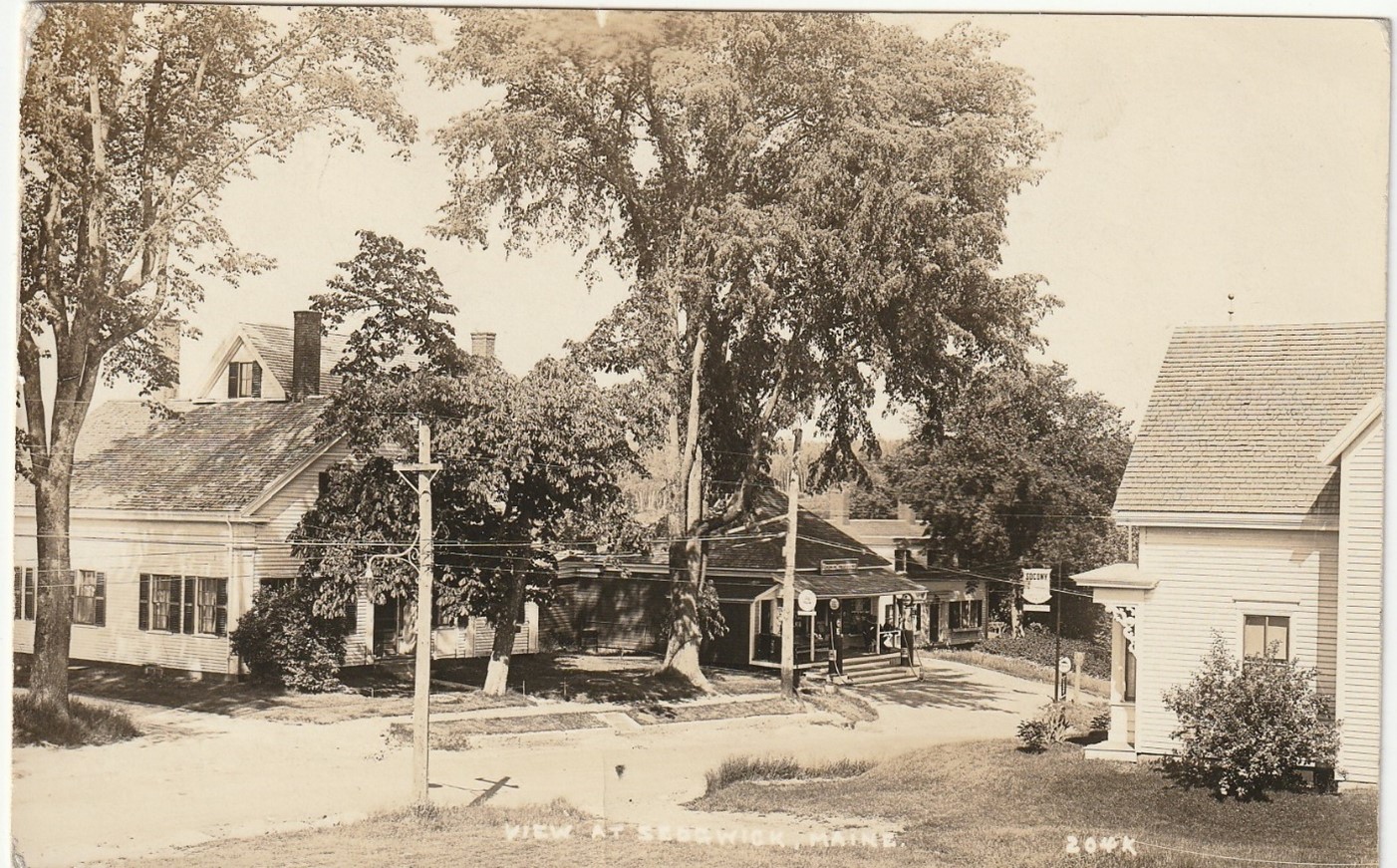
In 1920 Irving and Phebe Candage sold land where the Traveler’s Home had stood to Ralph M. Buckminster who built a small store. He sold general merchandise until 1945.

This store is said to have been run by Richard Currier from 1860 to 1890 and then by Ned Currier until 1910.
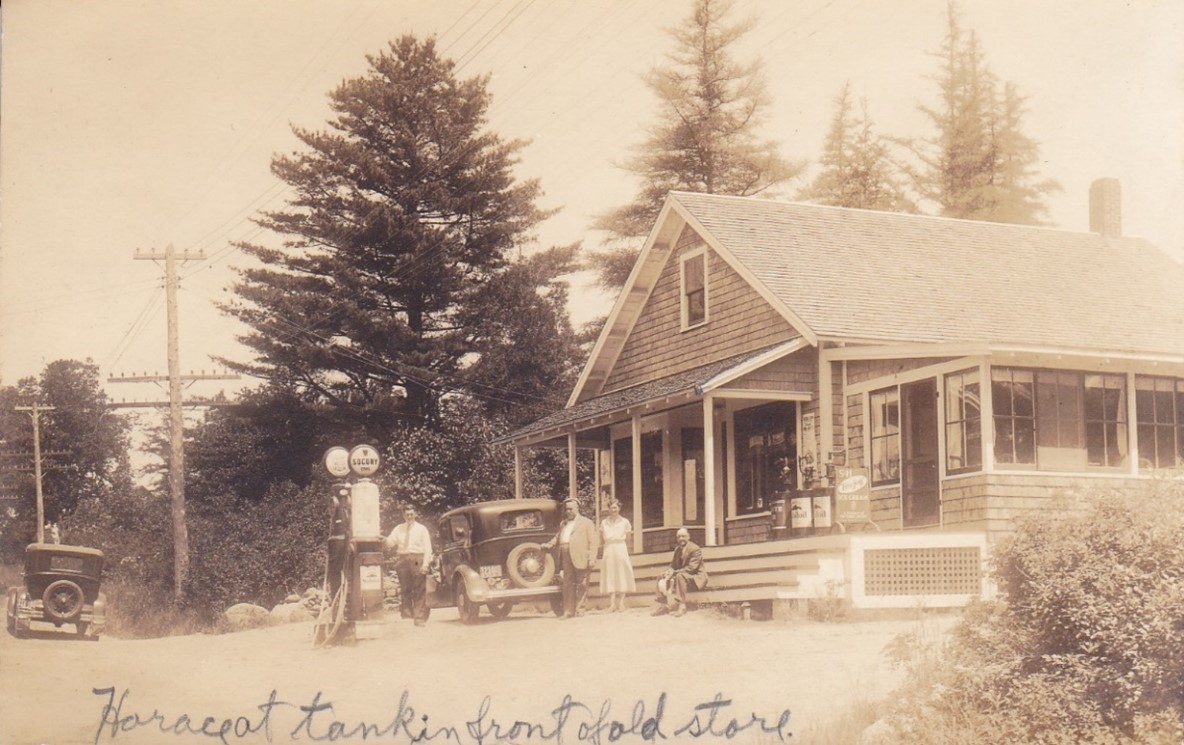
Horace and Katherine Wardwell’s general store was built in 1928. It burned in 1938 and was rebuilt by the Wardwells in the same year. It operated until1965 when it was sold to George Walsh. The store burned in 1968 and the building now on the property is a private residence.
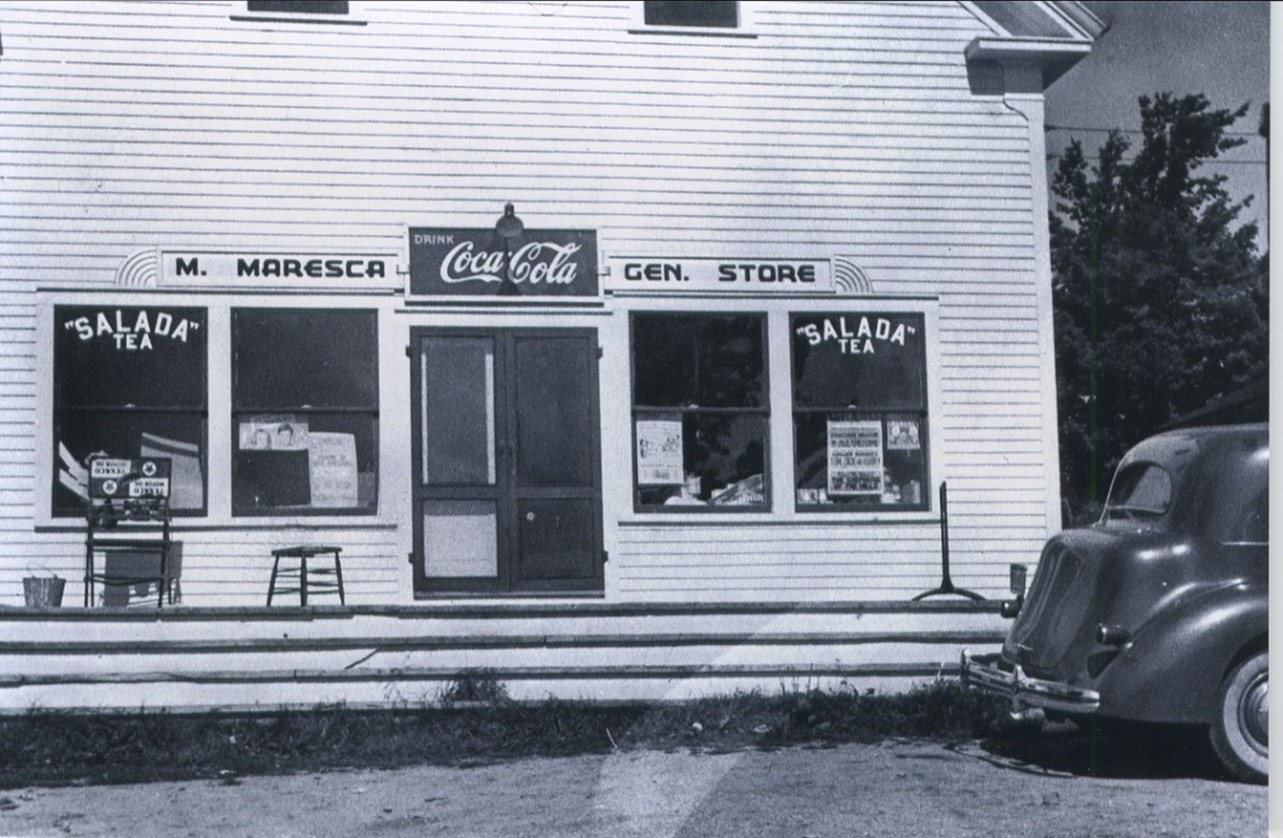
Michael Maresca, husband of Rozella Clapp Maresca, operated this grocery store from their home on Reach Road from the 1930s-1940s. Mike passed away in 1959 and Rozella died in 1963.
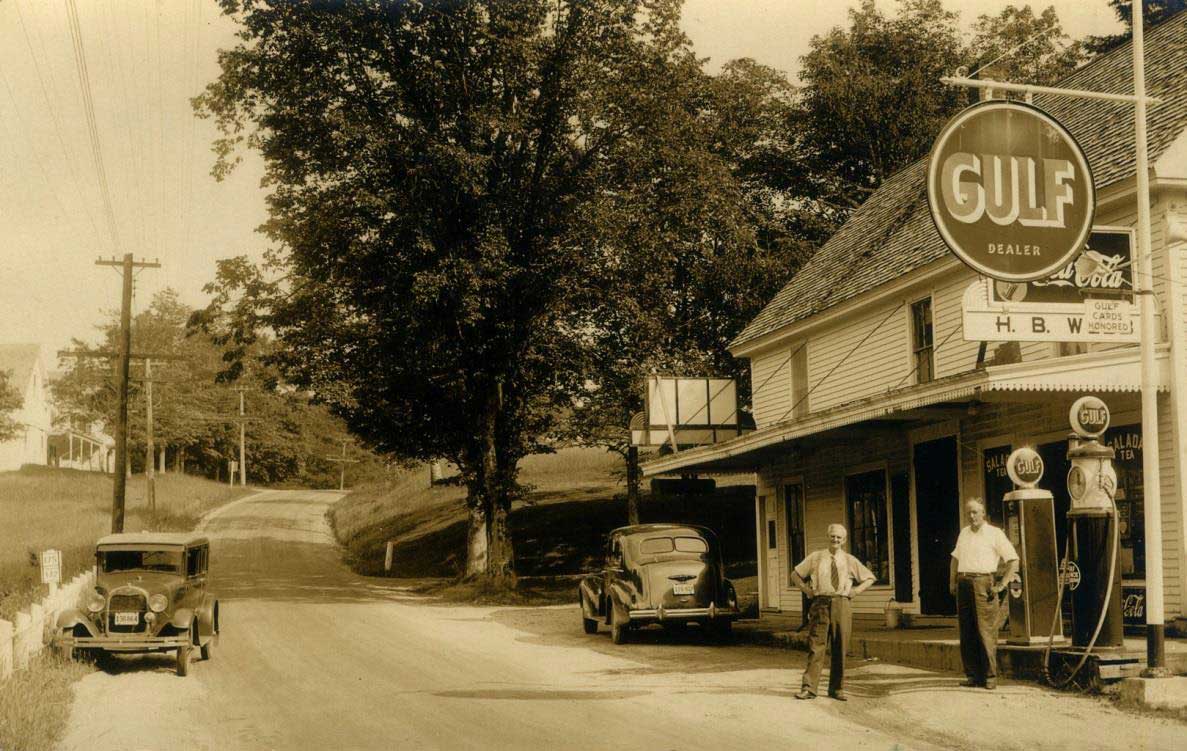
Henry Webb ran the general store at the time this photo was taken of Henry, on the right, and Chandler Bowden.
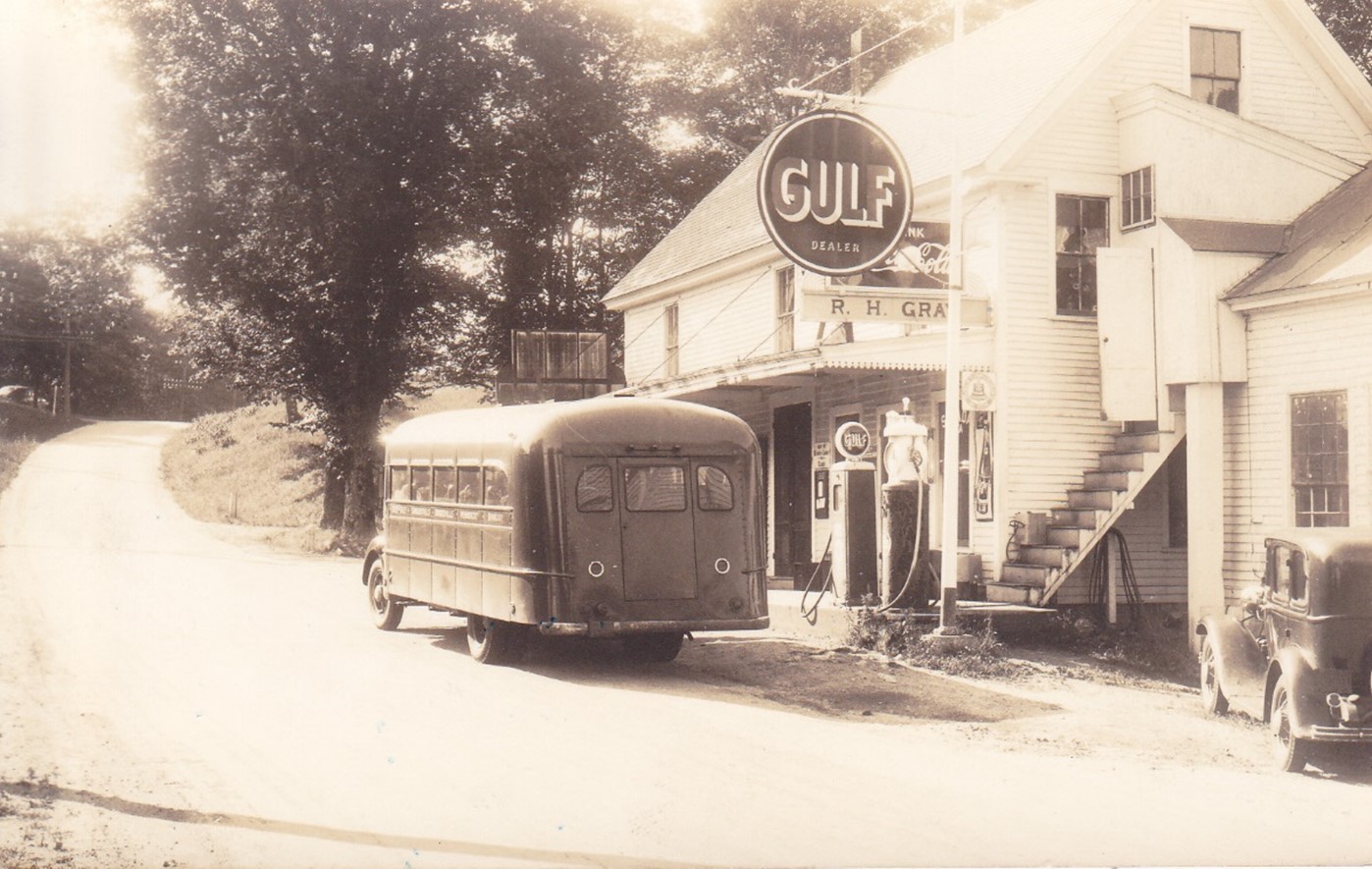
Rollie Gray had this store in Sargentville for many years. His wife Myrtle was the postmistress in the post office that was on the left side of the store.
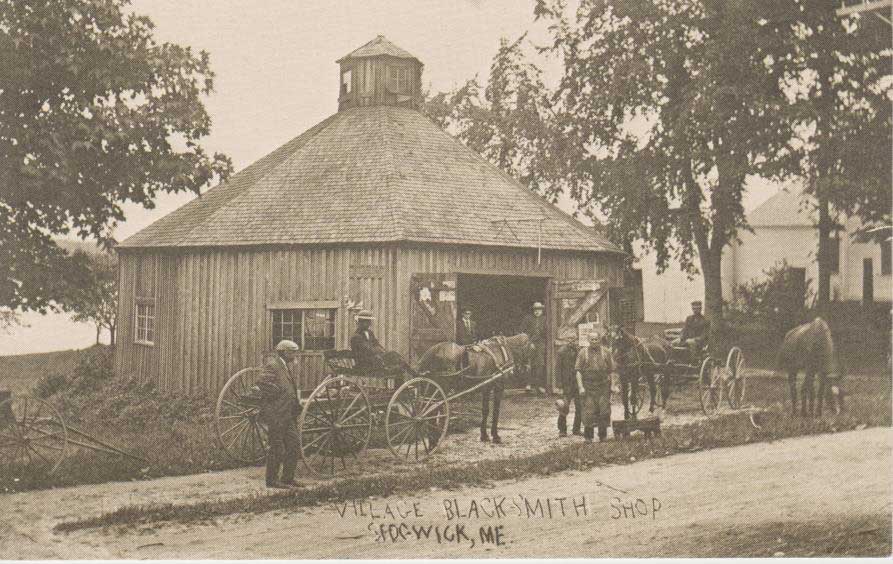
This is one of several blacksmith shops in Sedgwick in the years before autos replaced horses. It was located between Mrs. Cousins and Mrs. Choate near the former Sedgwick Store and is thought to have belonged to Austin H. and Lucy Dority whose children were Laura, Roy and Myra. By 1910 Austin was retired.
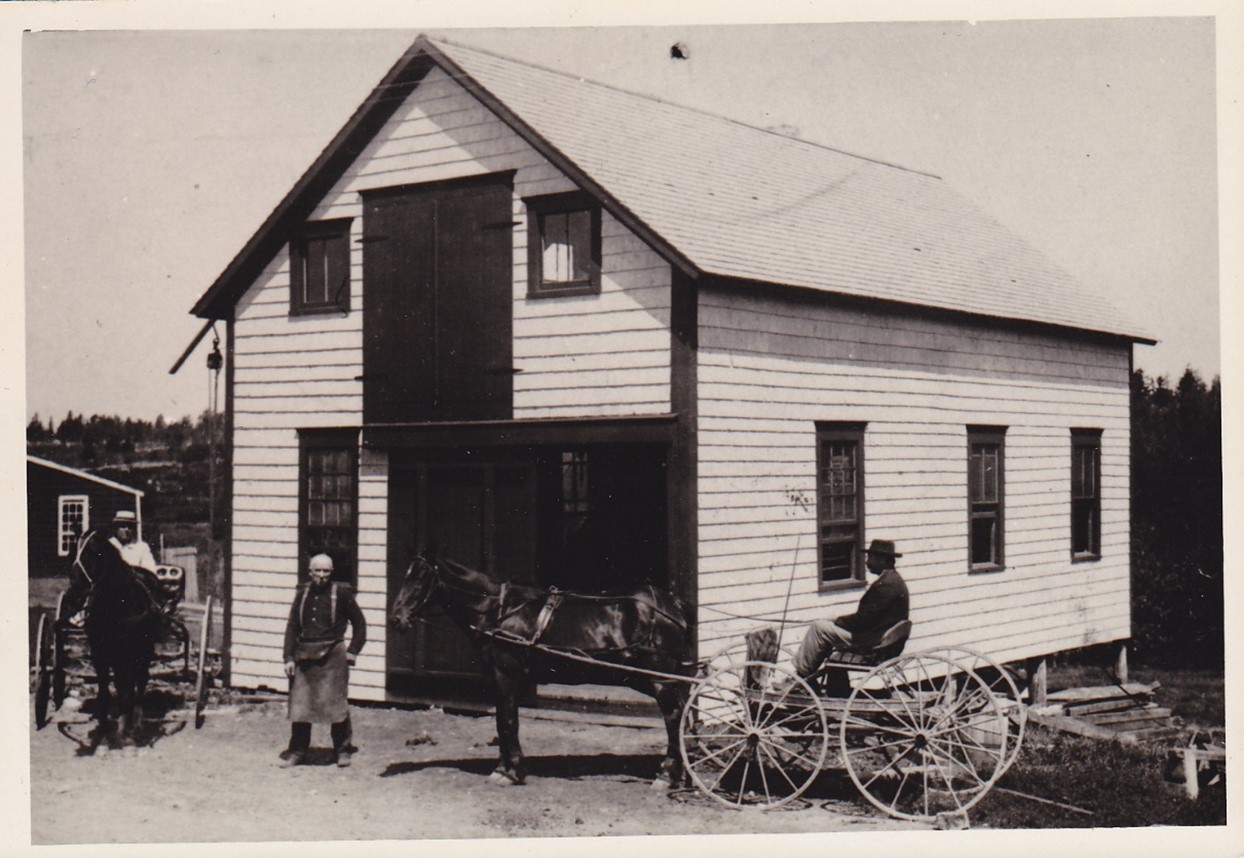
In this photo John W. Allen is standing in front of his blacksmith shop on Reach Road. The building has been renovated and is now used by Horace Wardwell for repairs on Wardwell Oil equipment.
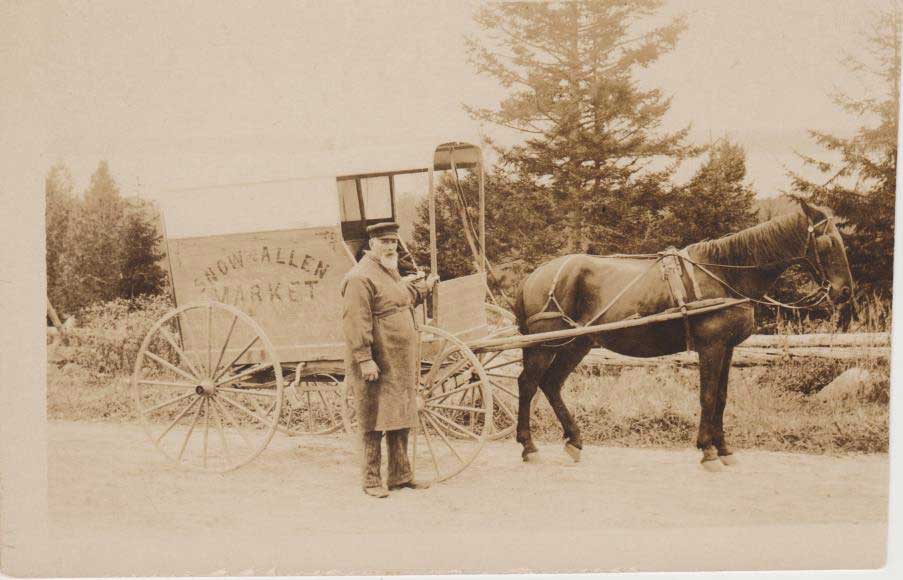
James Snow, the son of Captain John and Charlotte Horton Snow was born May 27, 1830. He and Jasper P. Allen peddled meat door to door with their horse and wagon, 1900-1922. Jasper ran the business alone from 1922 to 1948. Weston and John Varnum cut and sold meat from 1946 to 1947.

The text on the back of this photo postcard reads, “Uncle John Carroll, a peddler of dry goods who frequently came to Sargentville”. In her book Sargentville Historical Reminiscences, Abby Neese Says of John Carroll, “Imogene Grant told me that he boarded at the home of Amos Allen, Albert’s grandfather. He was a Catholic, born in Ireland, and had studied to be a priest.”2
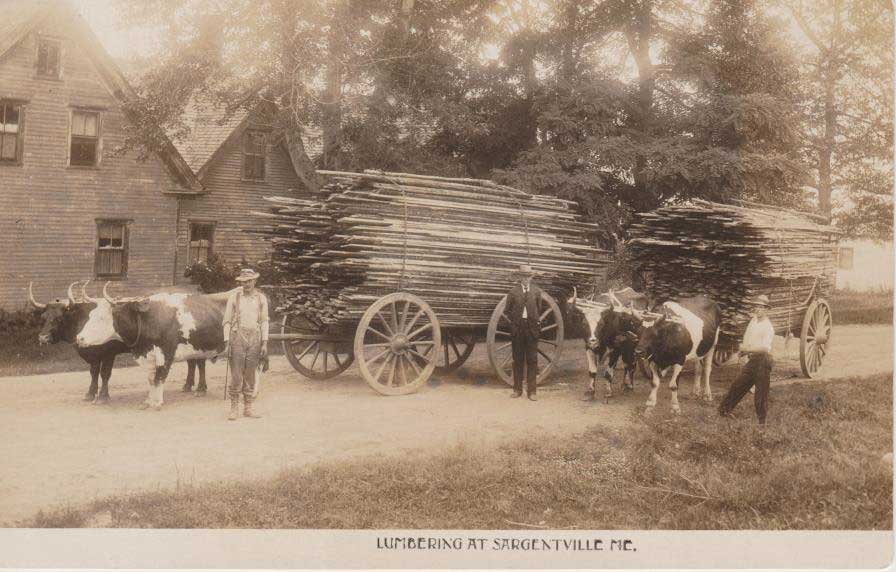
Note on back-“Horace Eaton, Rufus Hinkley, Dr. France August, 1910”. Lumber was cut at local saw mills and used on Sedgwick homes or buildings or shipped via schooners to other towns or countries. Oxen pulled the heavy loads. The old France house in the background was built around 1814.

George Higgins also had a team and was hired when their help was needed to haul heavy loads such as granite, stones or even buildings. In Dora Currier’s journal she writes of them digging a new well: “Sept. 23, 1914 Grover Eaton has worked here today stoning the well and George Higgins hauled the stone with his oxen.”
______________________________
1 Sedgwick Bicentennial Committee 1976, Sedgwick Maine A Record of Business 1762-1976.
2 Neese, Abby, Sargentville Historical Reminiscences, Courier-Gazette, Inc., Rockland, ME., Acknowledgments

